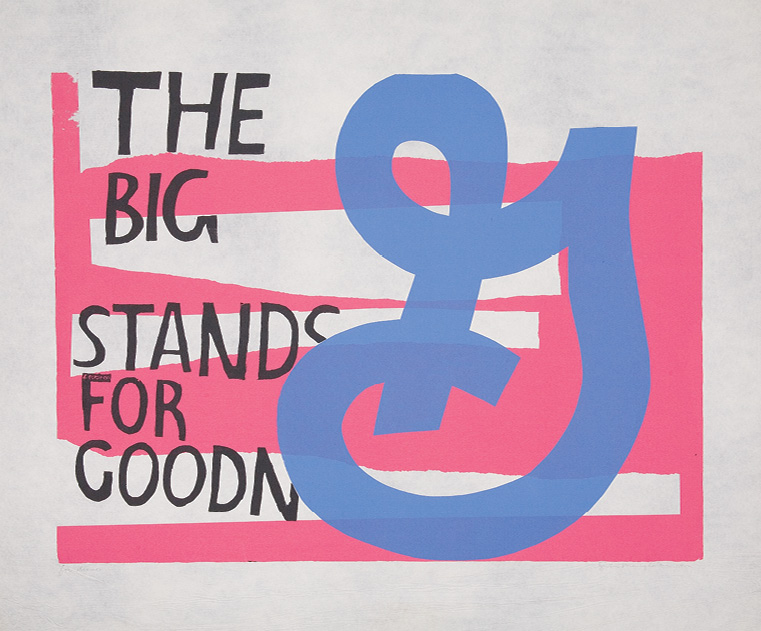BY: MARY ANN STEINER
If you remember Andy Warhol's iconic Campbell's soup cans or Roy Lichtenstein's paintings of Mickey Mouse, you know something of Pop art. It was called that because popular culture was its subject matter, and everyday graphics like comic books and billboards shaped its technique. It was the 60s, and artists were thumbing their noses at lofty subject matter and the "high arts" focus on inward-looking creations. Pop artists looked out to the world around them, co-opting familiar images and manipulating them in fun, sometimes subversive, ways.

One of Pop's lesser known artists was Sr. Corita Kent, IHM, known mostly as Corita. Her sense of the subversive was to use the images and words of American consumerism for purposes of social and spiritual activism. "For Eleanor" is a serigraph by Corita in which she took the General Mills logo and cut its tag line to "The Big G stands for Goodn." No doubt General Mills wanted that G associated with the wholesome goodness of Cheerios and Wheaties, but Corita's abbreviation conjures up ideas about goodness, Godliness and the common good. The theologian Harvey Cox identified Corita's genius in uplifting the commonplace to new forms of goodness: "Like a priest, a shaman, a magician, she could pass her hands over the commonest of the everyday, the superficial, the oh-so-ordinary, and make it a vehicle of the luminous, the only, and the hope filled."
The common good relies on exactly that outward mode of activating the holiness planted in the mundane. What's common about the common good is that it has to be accessible to anyone: nuns and nurses, farmers, teachers, taxi drivers, CEOs and CNAs. And what's good about it must be good for everyone: doctors and patients, liberals and conservatives, laborers and managers, the desperately poor and the incredibly rich.
Any notion that the common good is a utopian ideal on the one hand, or a utilitarian practice on the other, misses the point. The common good must be actionable, replicable and relational. Articles in this issue describe how the social virtues of compassion, kinship and solidarity can be applied in situations of racism, disparities, fundamentalism, questionable business practices and dirty politics to achieve the best good that we as community can achieve. Many thanks to our authors, who lead us into thoughtful intersections of the common good and health care. In addition to his article, Fr. Charles Bouchard, OP, served up excellent advice and feedback in his role as guest co-editor.
Two things to note: We asked people inside the ministry and some outside the ministry to give us their ideas about the common good. All the statements we received are featured throughout the special section, including one from former president Jimmy Carter, who kindly responded to our request.
Secondly, we know that people in schools and health care ministries sometimes use Health Progress articles in education and formation exercises. In this issue, we've provided discussion questions for Clarke Cochran's article on health care rationing and Michael Naughton's article on goods we hold in common. We hope you find them useful.
— Mary Ann Steiner
____________________
Corita Kent, for Eleanor, 1964.
Reprinted with permission of the Corita Art Center, Immaculate Heart Community, Los Angeles. Photograph by Joshua White.